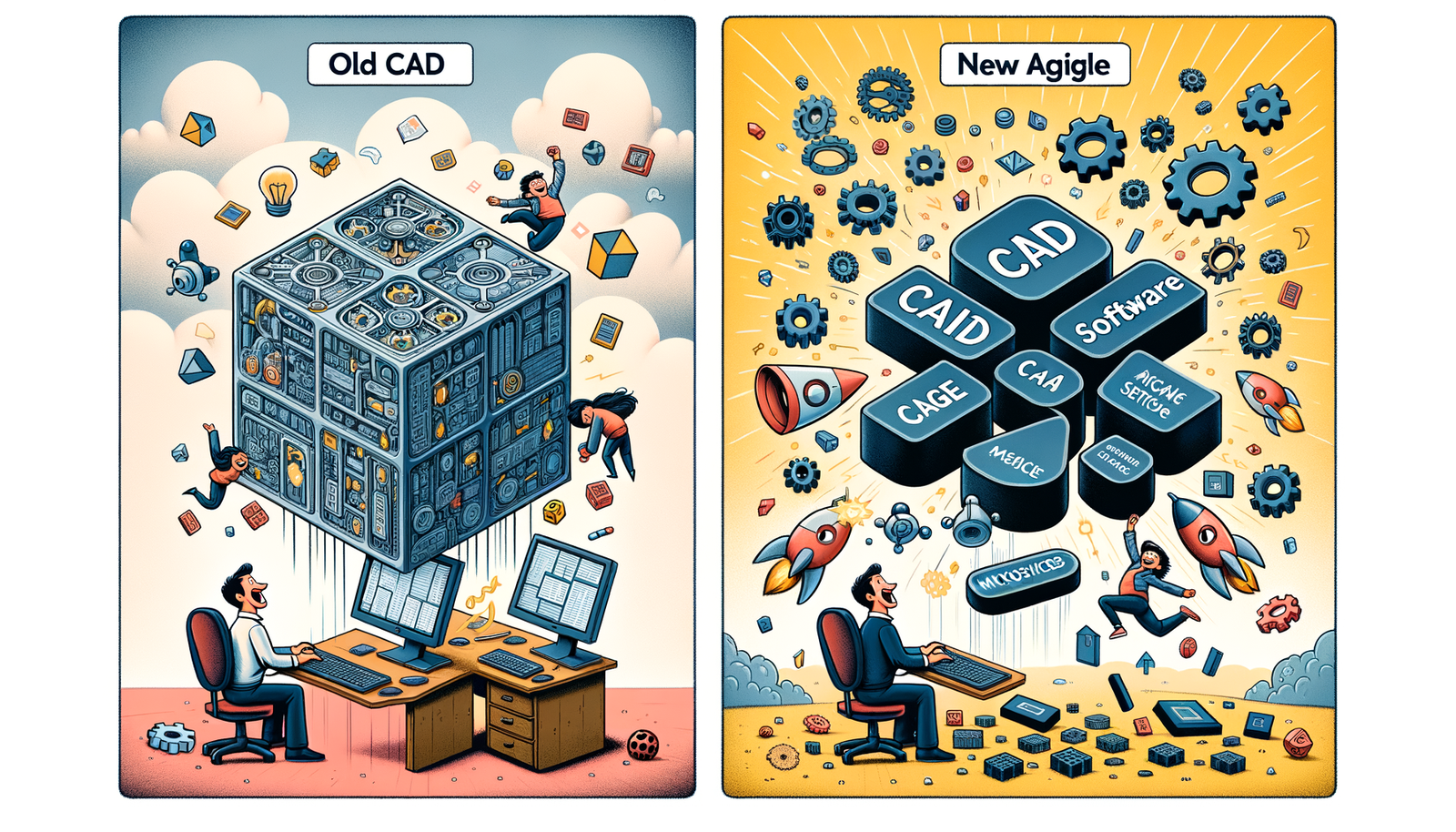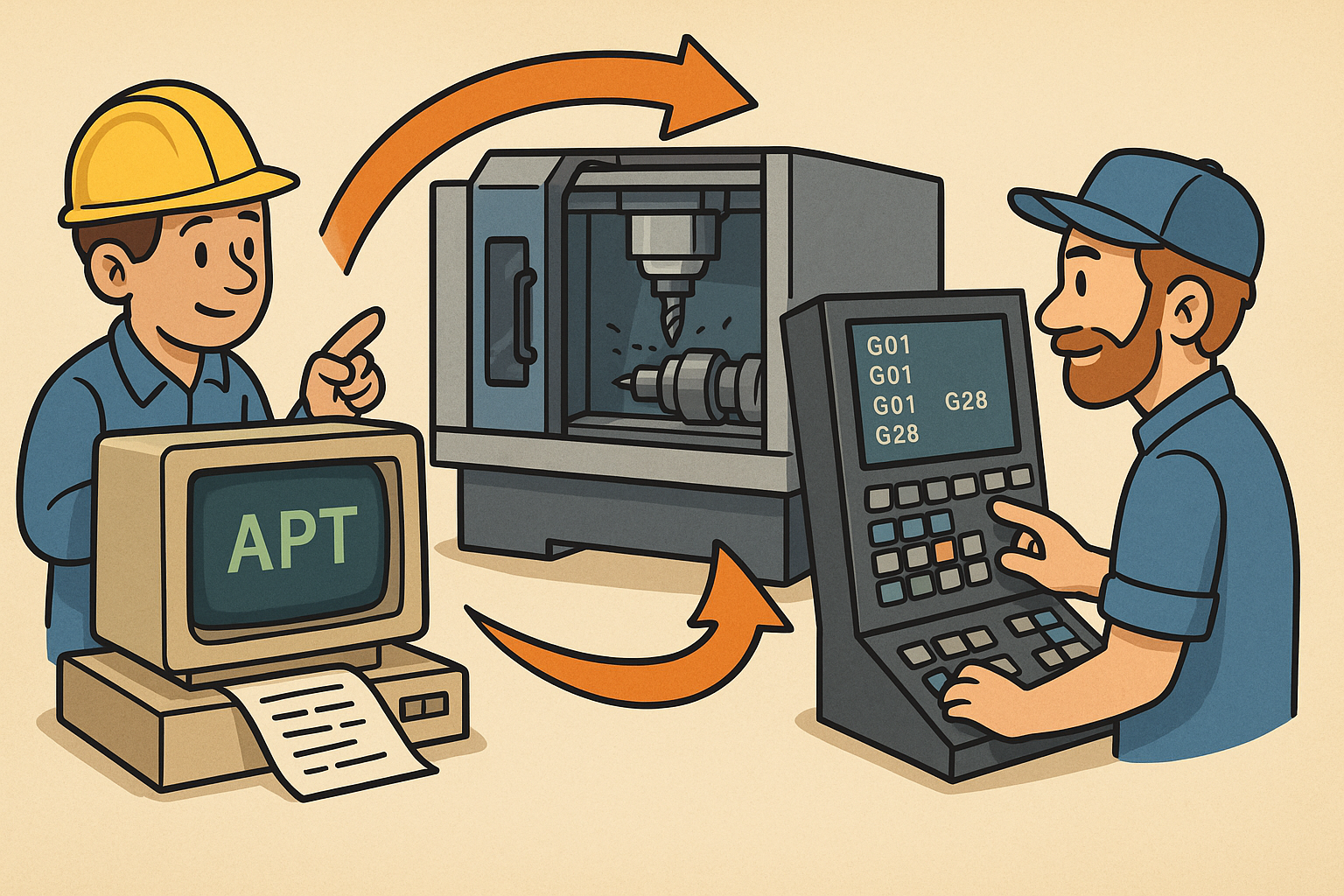Your Cart is Empty
Customer Testimonials
-
"Great customer service. The folks at Novedge were super helpful in navigating a somewhat complicated order including software upgrades and serial numbers in various stages of inactivity. They were friendly and helpful throughout the process.."
Ruben Ruckmark
"Quick & very helpful. We have been using Novedge for years and are very happy with their quick service when we need to make a purchase and excellent support resolving any issues."
Will Woodson
"Scott is the best. He reminds me about subscriptions dates, guides me in the correct direction for updates. He always responds promptly to me. He is literally the reason I continue to work with Novedge and will do so in the future."
Edward Mchugh
"Calvin Lok is “the man”. After my purchase of Sketchup 2021, he called me and provided step-by-step instructions to ease me through difficulties I was having with the setup of my new software."
Mike Borzage
Design Software History: Transforming CAD Software Architecture with Microservices: A New Era of Agility and Innovation
October 19, 2024 6 min read


Introduction
In the rapidly evolving landscape of software development, the rise of microservices architecture has marked a significant shift in how complex applications are designed and managed. This paradigm shift emphasizes the decomposition of traditional monolithic systems into smaller, independent services that can be developed, deployed, and scaled autonomously. As industries seek to enhance scalability and flexibility, microservices have emerged as a pivotal solution, particularly in fields that demand high computational performance and seamless collaboration. The Computer-Aided Design (CAD) industry, which has historically relied on robust yet monolithic applications, stands on the cusp of transformation. The integration of microservices into CAD software promises not only to revolutionize design workflows but also to unlock unprecedented levels of efficiency and innovation. Understanding this transition requires a deep dive into the architectural evolution of CAD software and the potential impacts that microservices hold for designers and engineers worldwide.
Historical Background of CAD Software Architecture
The journey of CAD software began with monolithic architectures that encapsulated all functionalities within a single, cohesive application. These traditional models were sufficient in an era where design requirements were relatively straightforward, and computational resources were limited. However, as design complexity grew, so did the limitations of monolithic systems. Challenges such as scalability issues, difficulties in maintainability, and obstacles in integrating new technologies became increasingly apparent. The rigidity of monolithic CAD applications made it challenging to update or modify specific components without affecting the entire system, leading to longer development cycles and increased risk of system errors.
Concurrently, the broader software industry began shifting towards microservices architecture, propelled by technological advancements in cloud computing and containerization. Cloud platforms provided the necessary infrastructure to support distributed systems, while containerization technologies like Docker enabled developers to package services with all their dependencies, ensuring consistent deployment across environments. This shift was marked by a move away from monolithic applications towards systems composed of discrete, loosely coupled services. Companies such as Netflix and Amazon pioneered this transition, showcasing the advantages of microservices in handling large-scale, complex applications.
In the realm of CAD, leaders like Autodesk and Dassault Systèmes recognized the potential of microservices to address the limitations inherent in traditional CAD software. These companies began advocating for a modular approach, exploring how microservices could enhance scalability and flexibility. Autodesk, for instance, invested in cloud-based solutions, integrating microservices to enable collaborative workflows and real-time updates. Dassault Systèmes similarly explored distributed architectures, aiming to improve integration capabilities and support for multi-disciplinary design processes. The pioneering efforts of these industry giants set the stage for a new era in CAD software development, where agility and responsiveness became central to meeting the evolving demands of designers and engineers.
Key Benefits of Microservices in CAD Software
The incorporation of microservices into CAD software architecture brings forth a multitude of benefits that address long-standing challenges in design and engineering workflows. By breaking down complex applications into manageable, independent services, organizations can achieve greater agility and responsiveness to market needs.
Scalability and Flexibility
One of the most significant advantages of microservices is the ability to deploy and scale different services independently. This means that components of the CAD software that require more resources, such as rendering engines or simulation modules, can be scaled without affecting other parts of the system. This independent scalability ensures optimal use of computational resources, leading to improved performance and cost savings.
Companies like Onshape have embraced scalable solutions by leveraging cloud-based microservices architecture. Onshape's platform allows users to access powerful CAD tools through a web browser, with the heavy lifting done on cloud servers. This approach not only provides flexibility in scaling resources based on demand but also ensures that users always have access to the latest features without the need for local updates. The decoupled nature of microservices facilitates this level of scalability and flexibility, making it an attractive model for modern CAD applications.
Improved Collaboration and Integration
Microservices facilitate enhanced collaboration through the use of APIs and modular frameworks. By exposing services via APIs, different teams can work on various components simultaneously, promoting parallel development and reducing bottlenecks. This modularity also simplifies the integration of new features or third-party services, as each microservice communicates through well-defined interfaces.
The modular design enables:
- Seamless integration of new tools and technologies.
- Improved cross-team collaboration through clear service boundaries.
- Easier maintenance and updates of individual services without affecting the entire system.
Through microservices, CAD software can support more dynamic and interconnected workflows, facilitating better communication among design teams and integrating diverse functionalities into a cohesive platform.
Faster Innovation and Deployment
Microservices enable organizations to adopt iterative development and continuous deployment cycles. By allowing developers to work on small, independent services, feature rollouts become more manageable and less risky. Updates can be deployed rapidly, enabling CAD software providers to respond quickly to user feedback and market trends.
This approach accelerates innovation by:
- Reducing the time between development and deployment.
- Allowing for rapid prototyping and testing of new features.
- Minimizing the impact of failures through isolation of services.
The ability to quickly iterate and deploy changes is particularly valuable in the competitive field of CAD, where staying ahead with cutting-edge features can significantly impact user adoption and satisfaction.
Challenges and Considerations
While the benefits of microservices are compelling, transitioning to this architecture presents several challenges that organizations must carefully navigate. Successfully implementing microservices in CAD software requires addressing complexity, deployment, testing, and adoption hurdles.
Complexity Management
Microservices inherently increase the complexity of systems due to the distributed nature of services. Managing a network of interdependent services requires robust strategies to ensure effective communication and maintain system reliability. Challenges include handling service discovery, load balancing, and fault tolerance.
Strategies for managing this complexity involve:
- Implementing centralized logging and monitoring tools to track service performance.
- Adopting service meshes to manage communication between microservices.
- Ensuring data consistency across services through well-defined contracts and data models.
Effective complexity management is crucial to prevent the microservices architecture from becoming unmanageable and to maintain the integrity and performance of the CAD software.
Deployment and Testing
Testing microservices poses unique challenges, particularly in maintaining a continuous integration and continuous deployment (CI/CD) pipeline. Each service must be thoroughly tested individually and in conjunction with others to ensure seamless operation. The independence of services demands comprehensive testing strategies to detect integration issues early.
Tools and frameworks that aid in the deployment and testing of microservices include:
- Container orchestration platforms like Kubernetes for managing deployment and scaling.
- Automated testing tools specialized for microservices architectures.
- Continuous integration servers that support microservices workflows.
Investing in these tools is essential for maintaining the reliability and efficiency of CAD environments that rely on microservices, ensuring that updates and new deployments do not introduce unforeseen issues.
Adoption Barriers
Transitioning from legacy systems to a microservices architecture can encounter resistance due to several factors. Organizations may face substantial investments required for training, infrastructure, and re-engineering existing applications. There is often a learning curve associated with new technologies, and the uncertainty of change can hinder progress.
Overcoming adoption barriers involves:
- Providing comprehensive training programs for development and operations teams.
- Gradually integrating microservices alongside existing systems to mitigate risk.
- Demonstrating the long-term benefits and return on investment of the transition.
Addressing these concerns is critical for organizations to fully leverage the advantages of microservices and to ensure a smooth transformation of their CAD software architectures.
Conclusion
The evolution of CAD software architecture towards microservices represents a significant milestone in the pursuit of enhanced scalability, flexibility, and innovation. By embracing microservices, the CAD industry stands poised to transform design workflows, enabling more efficient collaboration and faster deployment of new features. This architectural shift aligns with the broader movement in software development, recognizing the need for systems that can adapt rapidly to changing demands and technological advancements.
Looking forward, the adoption of microservices in CAD software is likely to catalyze further advancements in design methodologies and tool capabilities. It paves the way for incorporating emerging technologies such as artificial intelligence and machine learning, which can be integrated as specialized services within the larger ecosystem. The ongoing importance of innovation cannot be overstated, as it is essential to meet the complex and evolving needs of modern design and engineering tasks.
Ultimately, the transition to microservices is more than a technical overhaul; it is a strategic move that positions organizations to thrive in a competitive and fast-paced industry. By investing in this architectural paradigm, CAD software providers can deliver more powerful, flexible, and user-centric solutions, driving progress and fostering creativity in the design processes of the future.
Also in Design News

Rhino 3D Tip: Rhino Section — Precise Cut Profiles for Documentation and Fabrication
January 06, 2026 2 min read
Read More
Design Software History: APT to G‑Code Dialects: The Evolution and Persistence of Vendor‑Specific CNC Post‑Processing
January 06, 2026 11 min read
Read More
Real-time CFD for Design Reviews: Progressive Solvers, GPU Pipelines, and Uncertainty-Aware Collaboration
January 06, 2026 12 min read
Read MoreSubscribe
Sign up to get the latest on sales, new releases and more …


